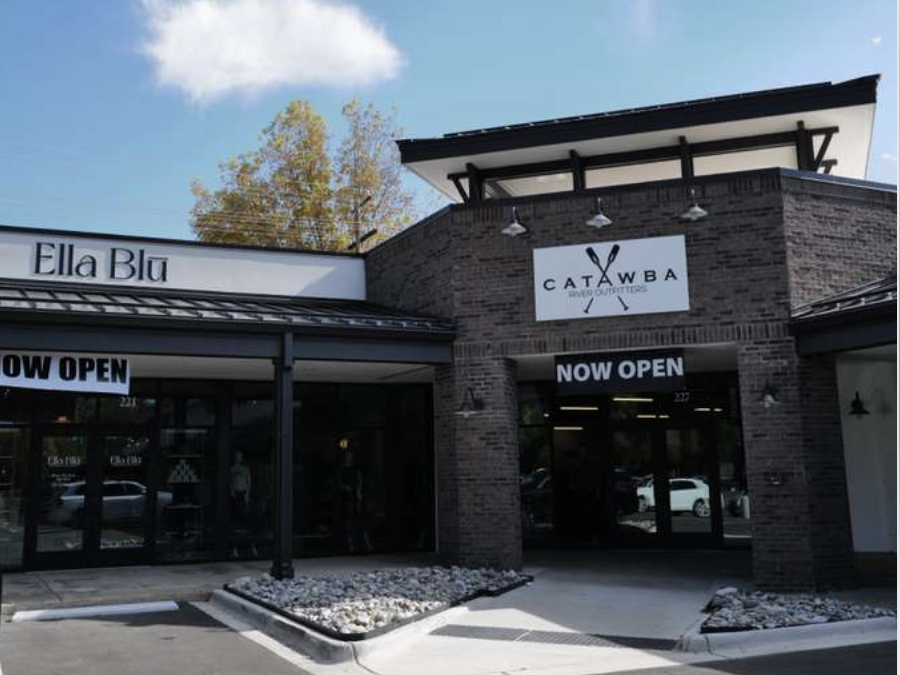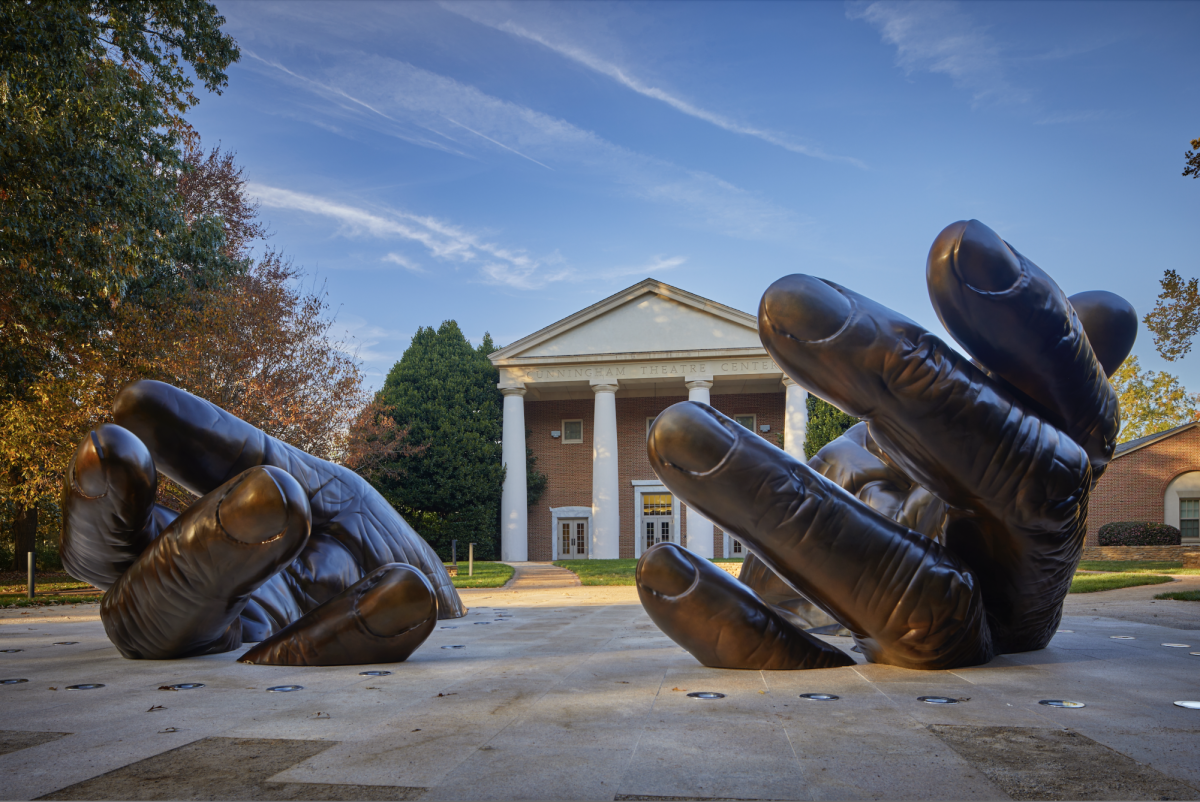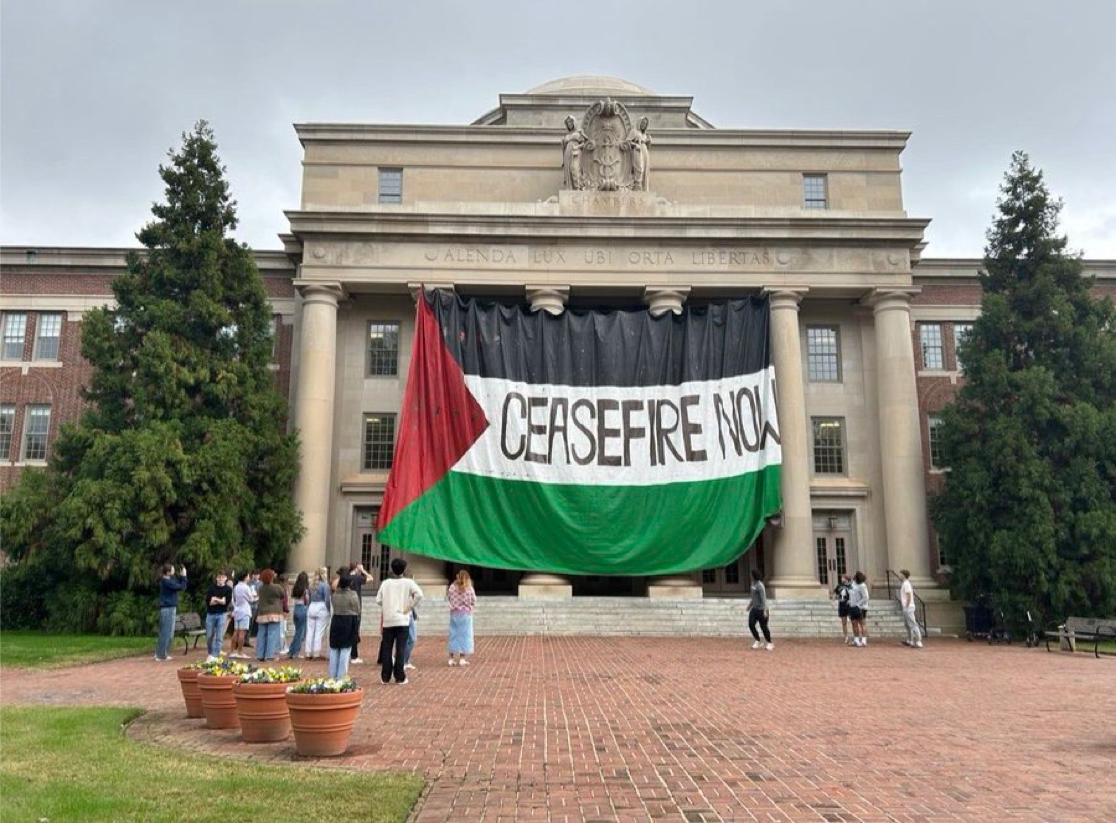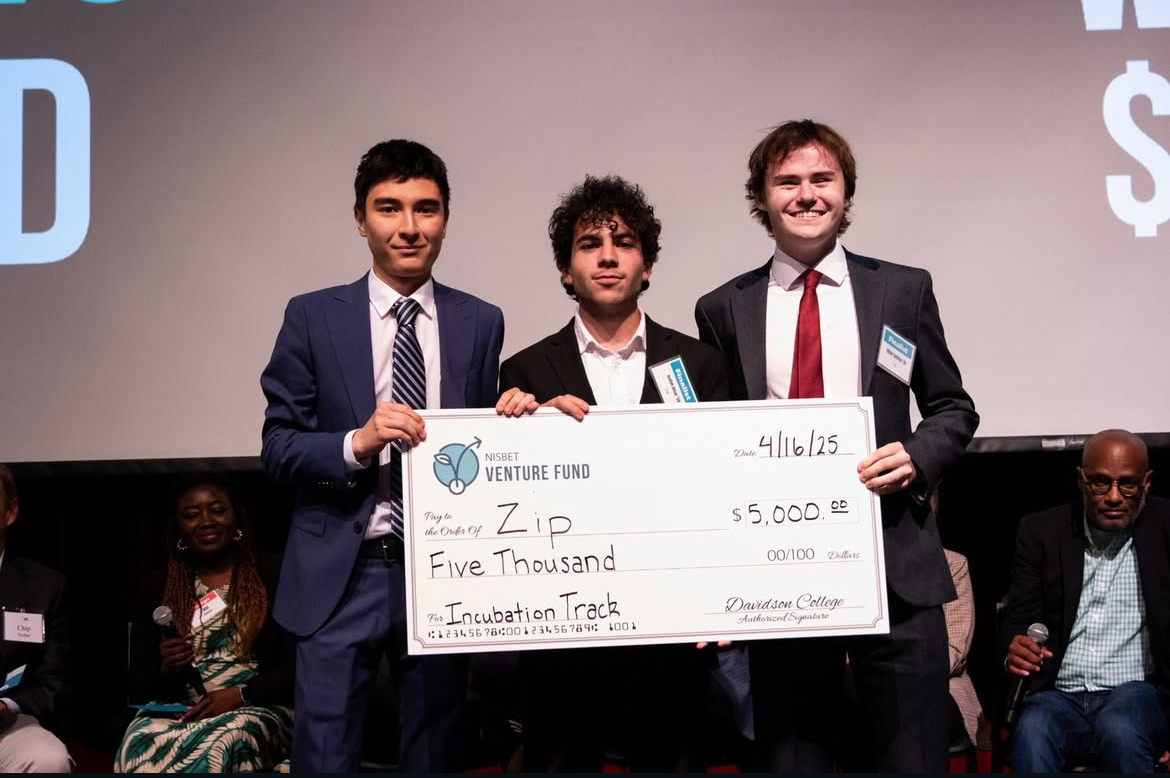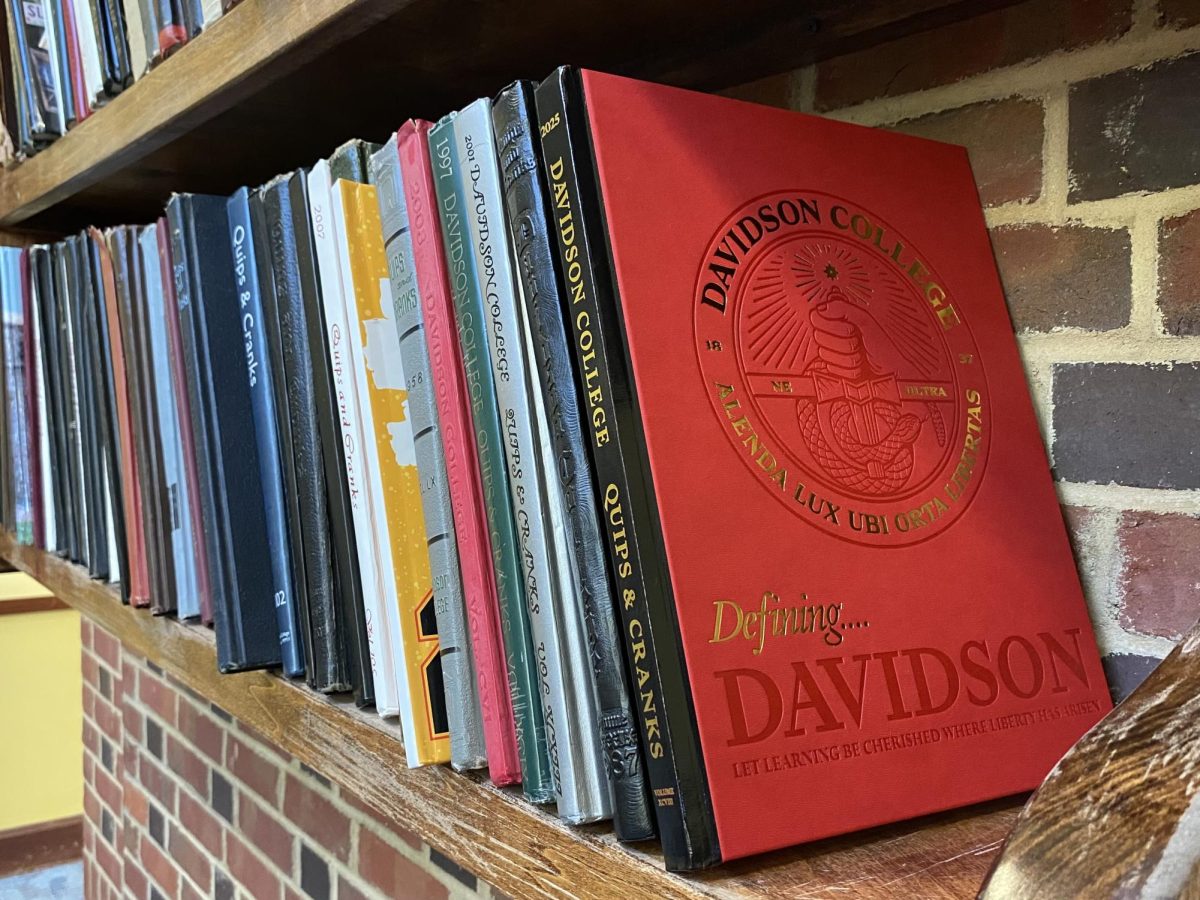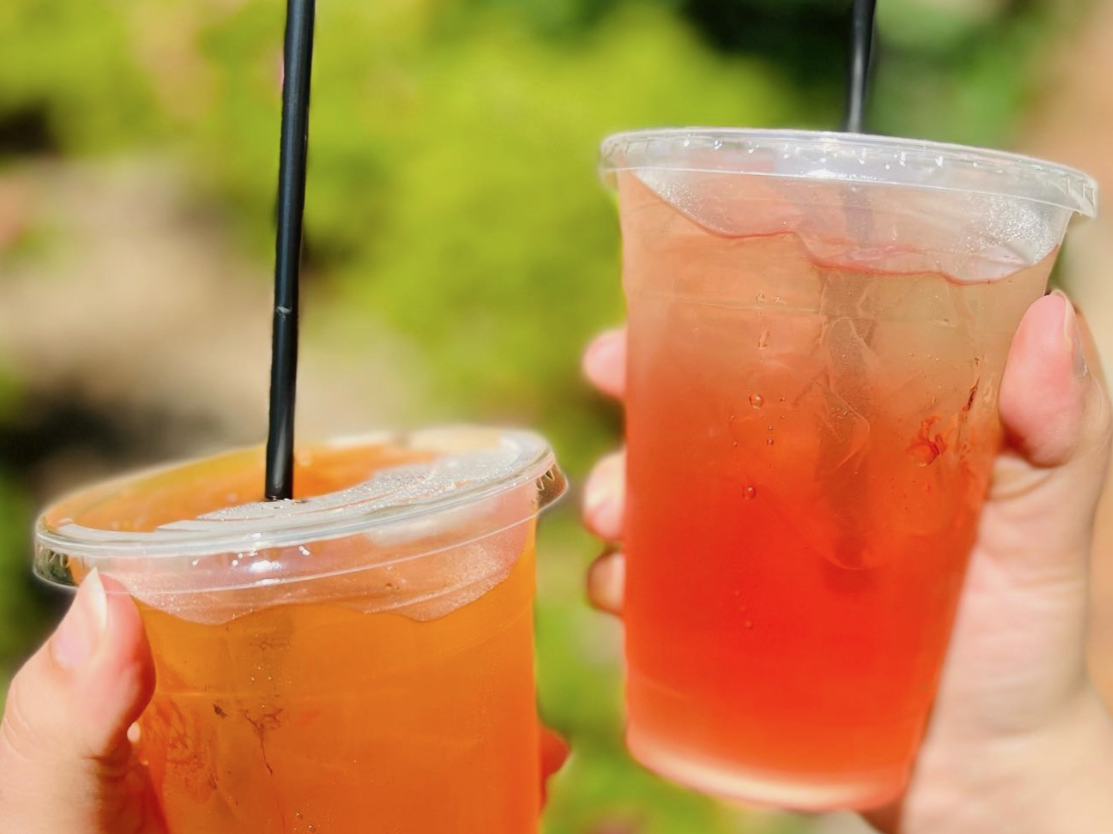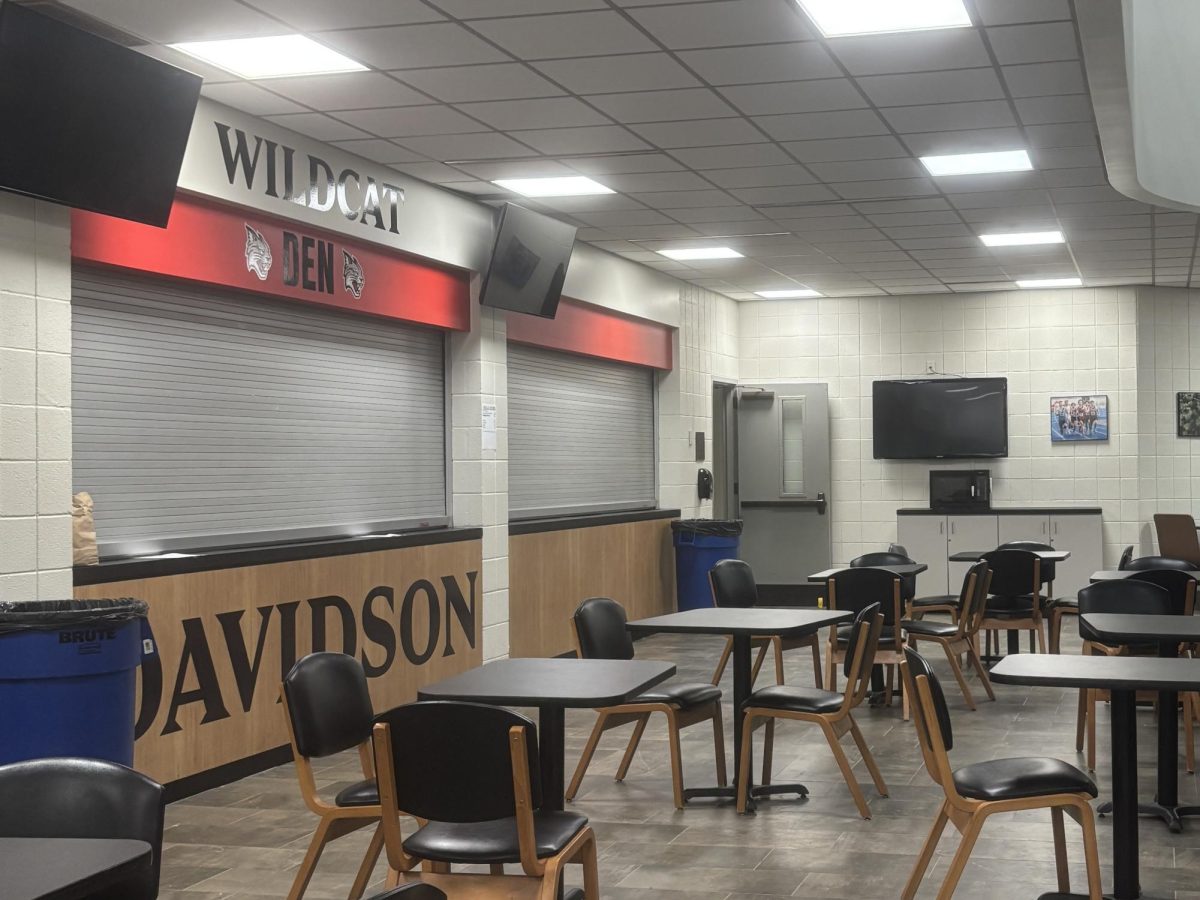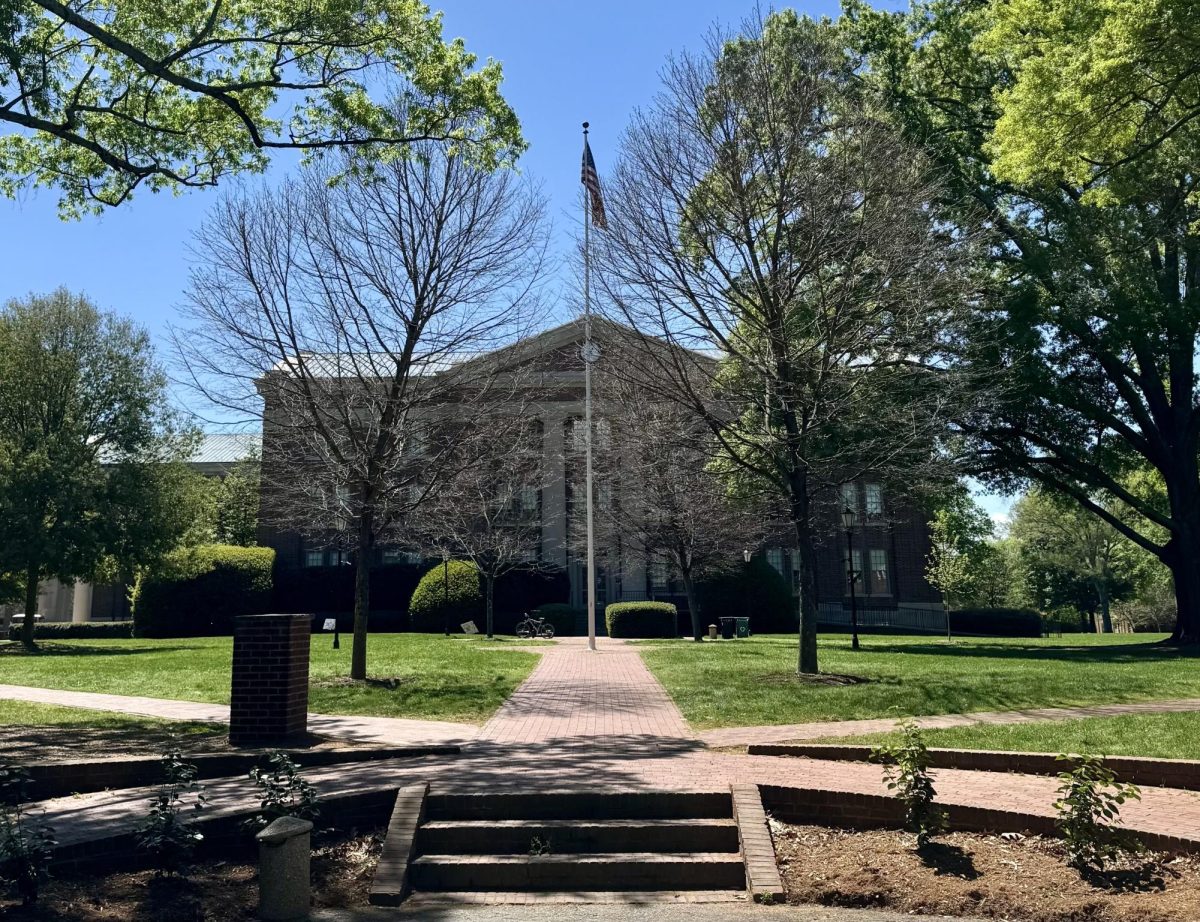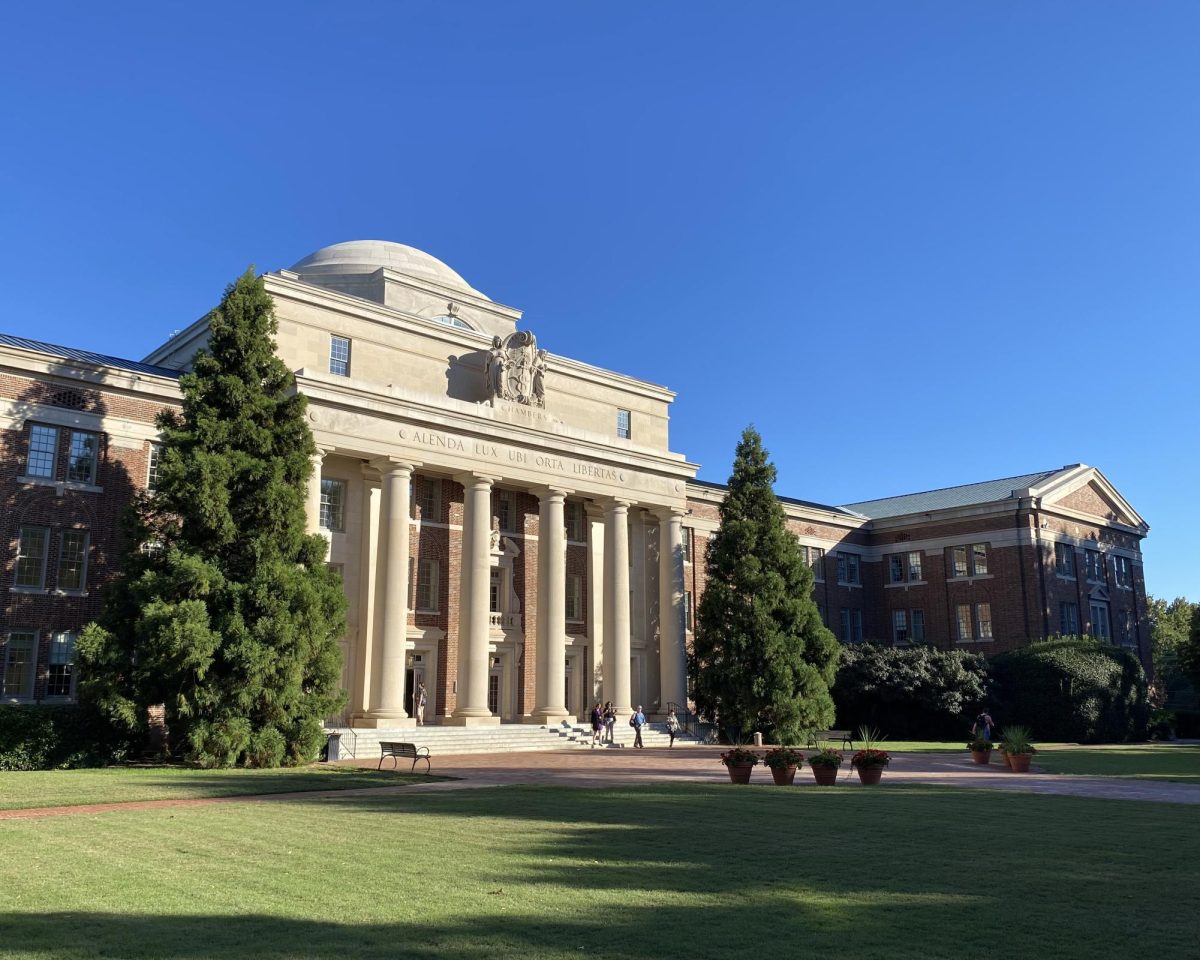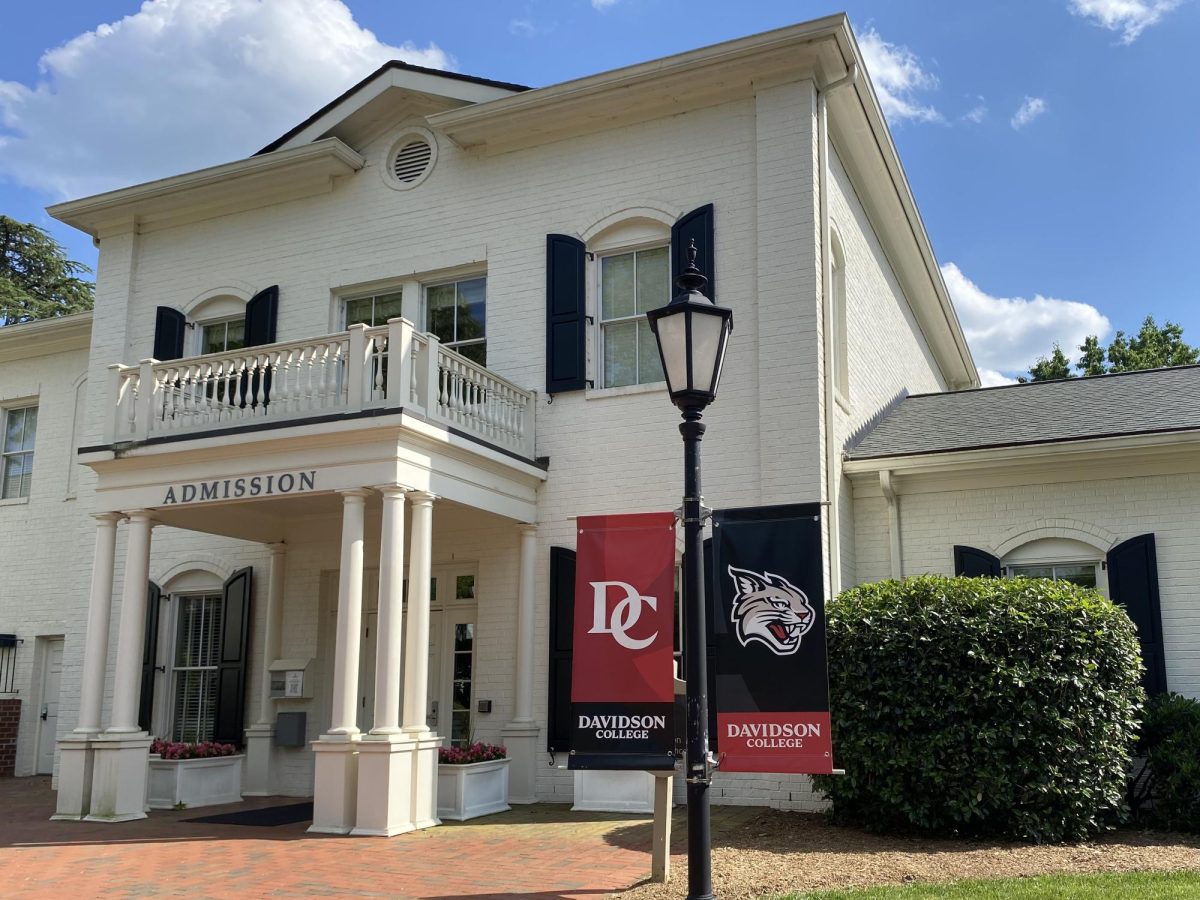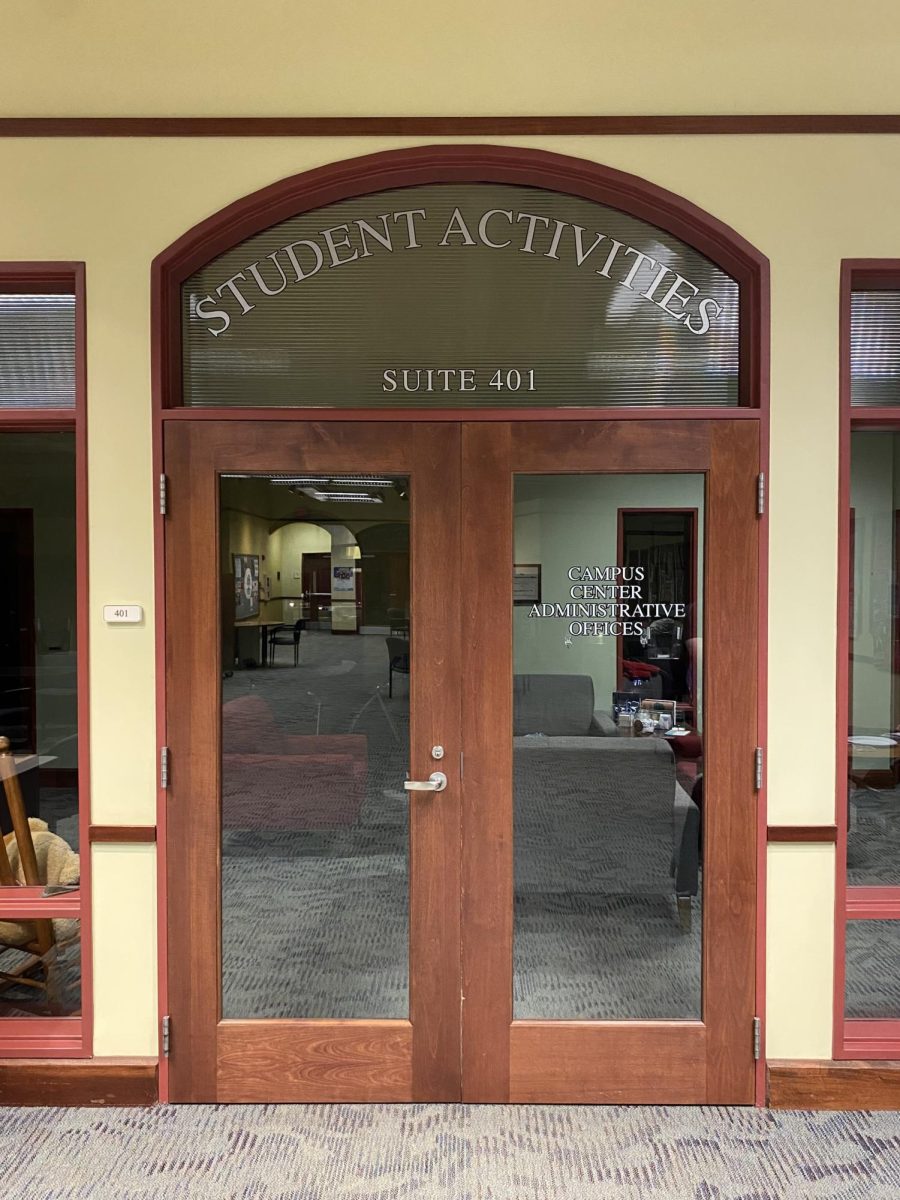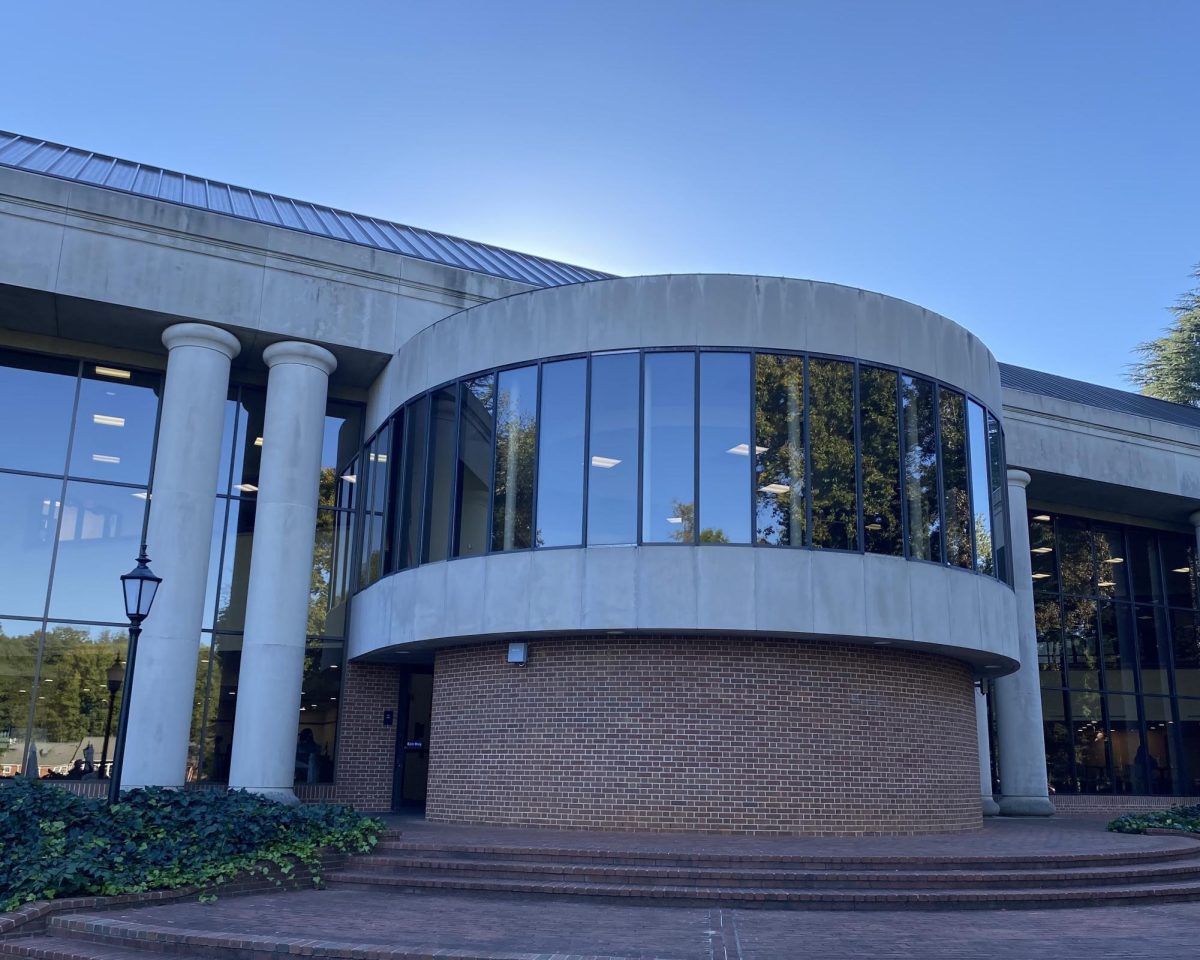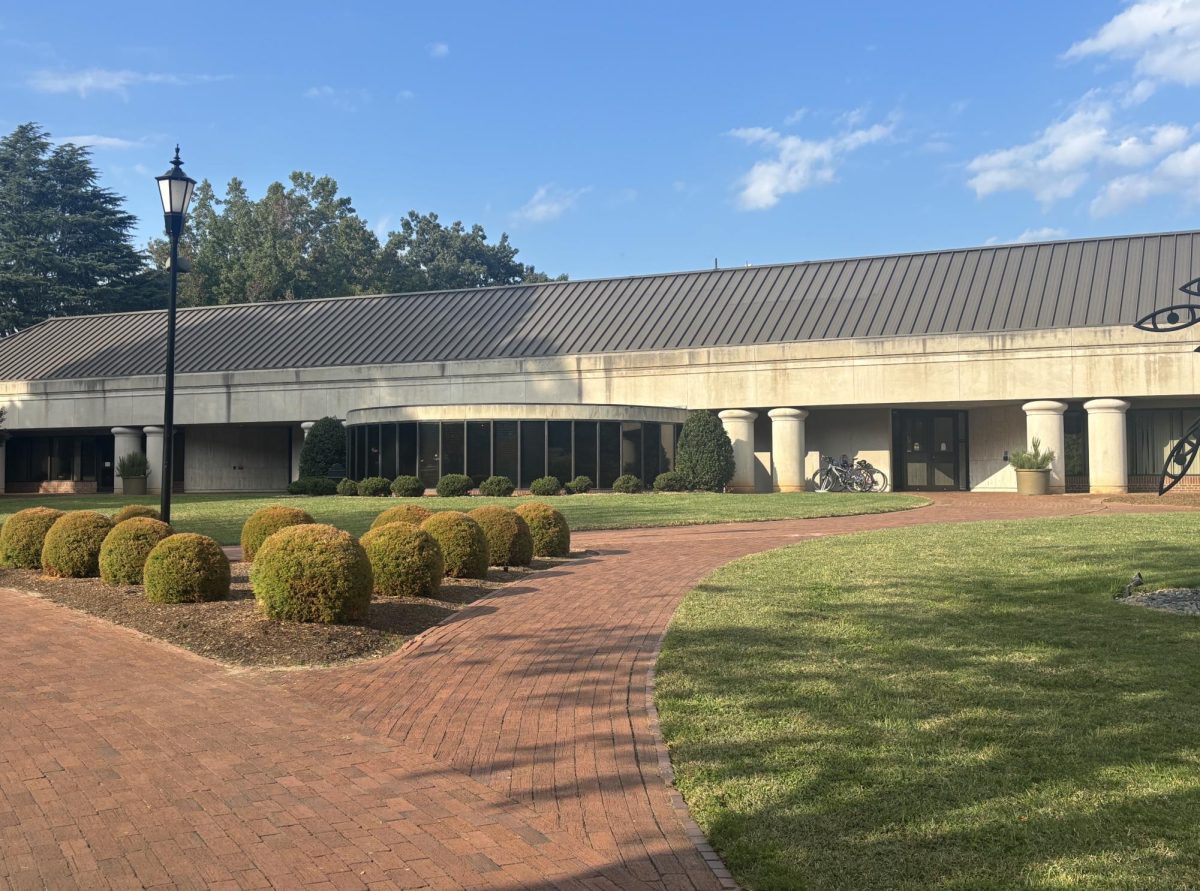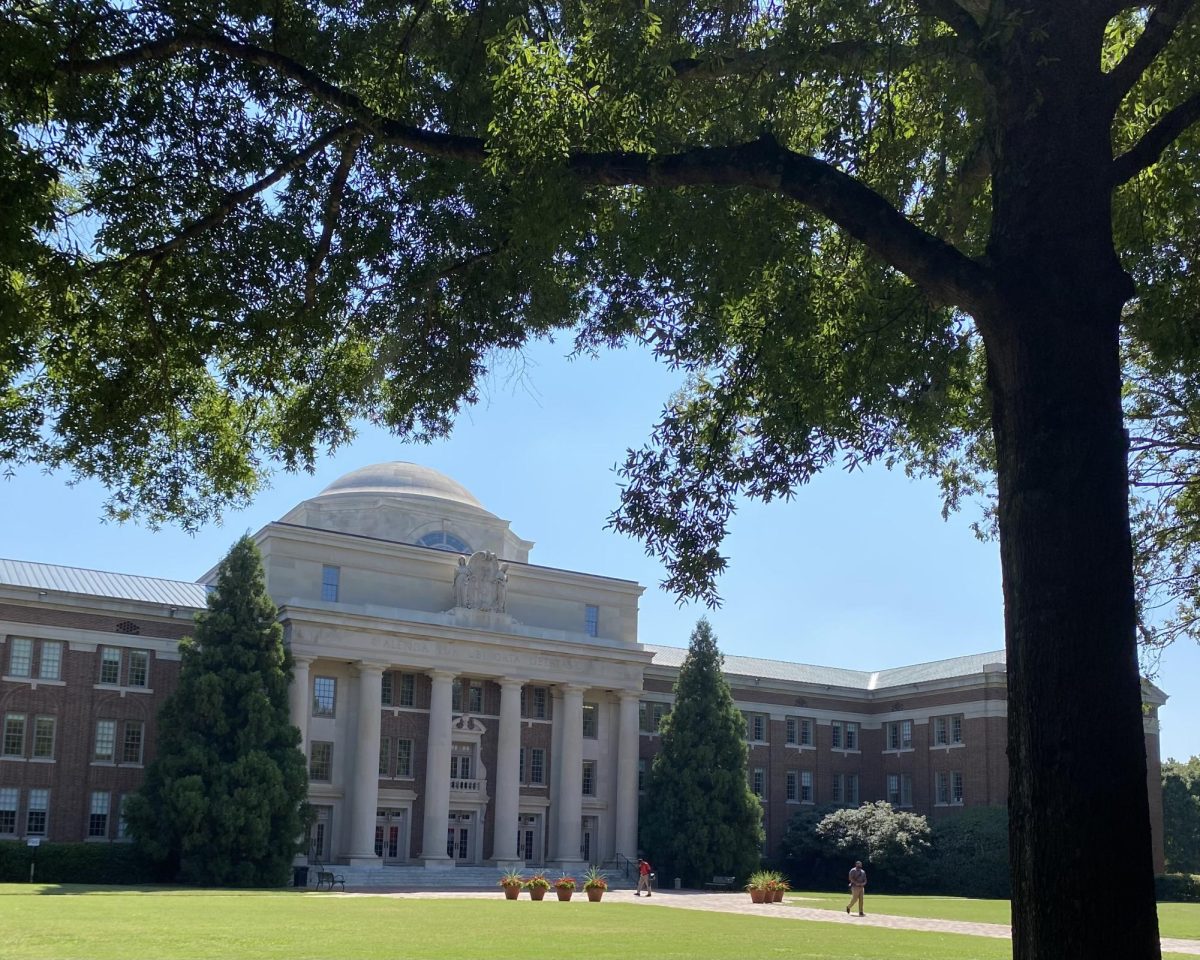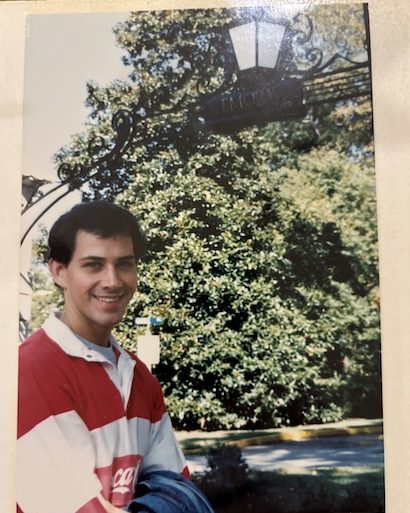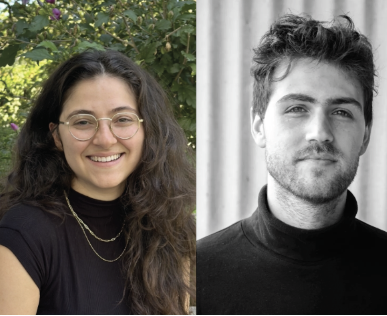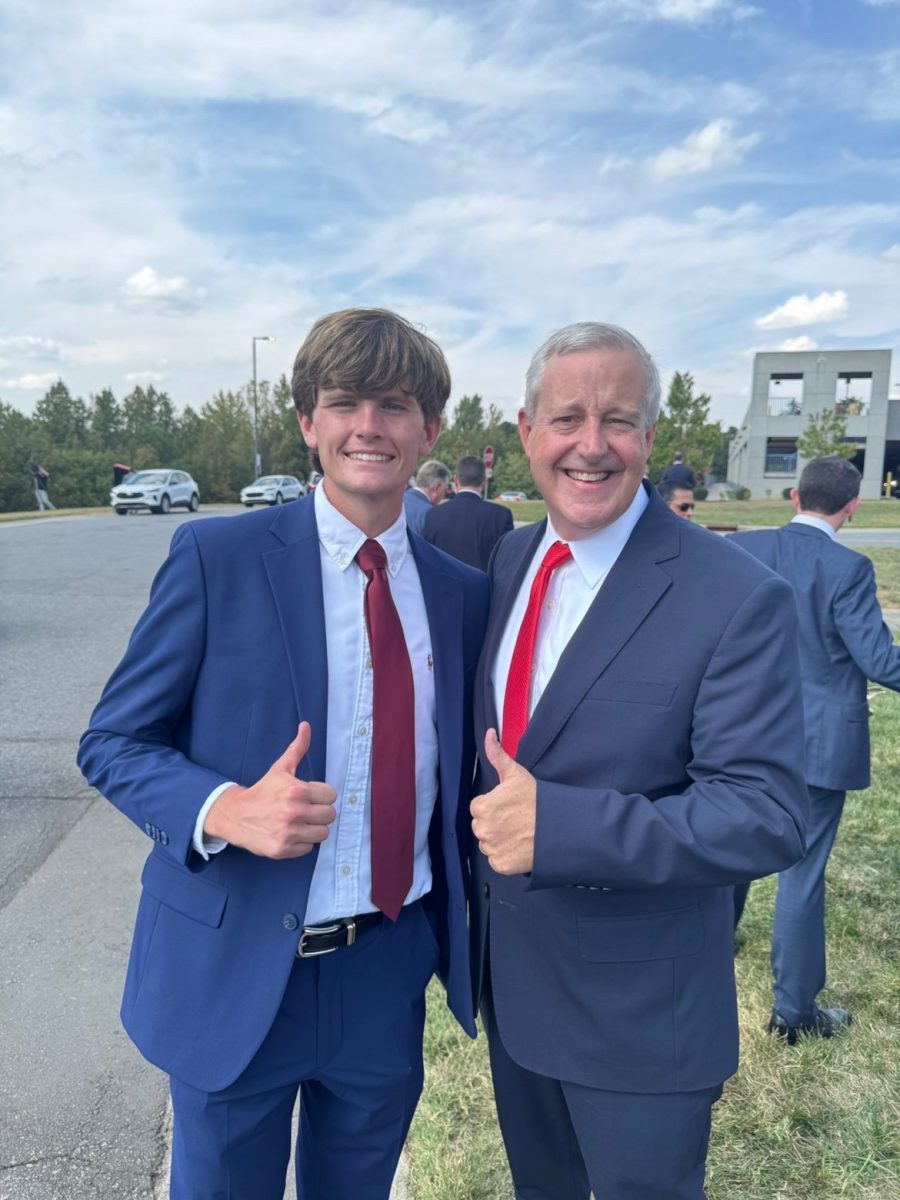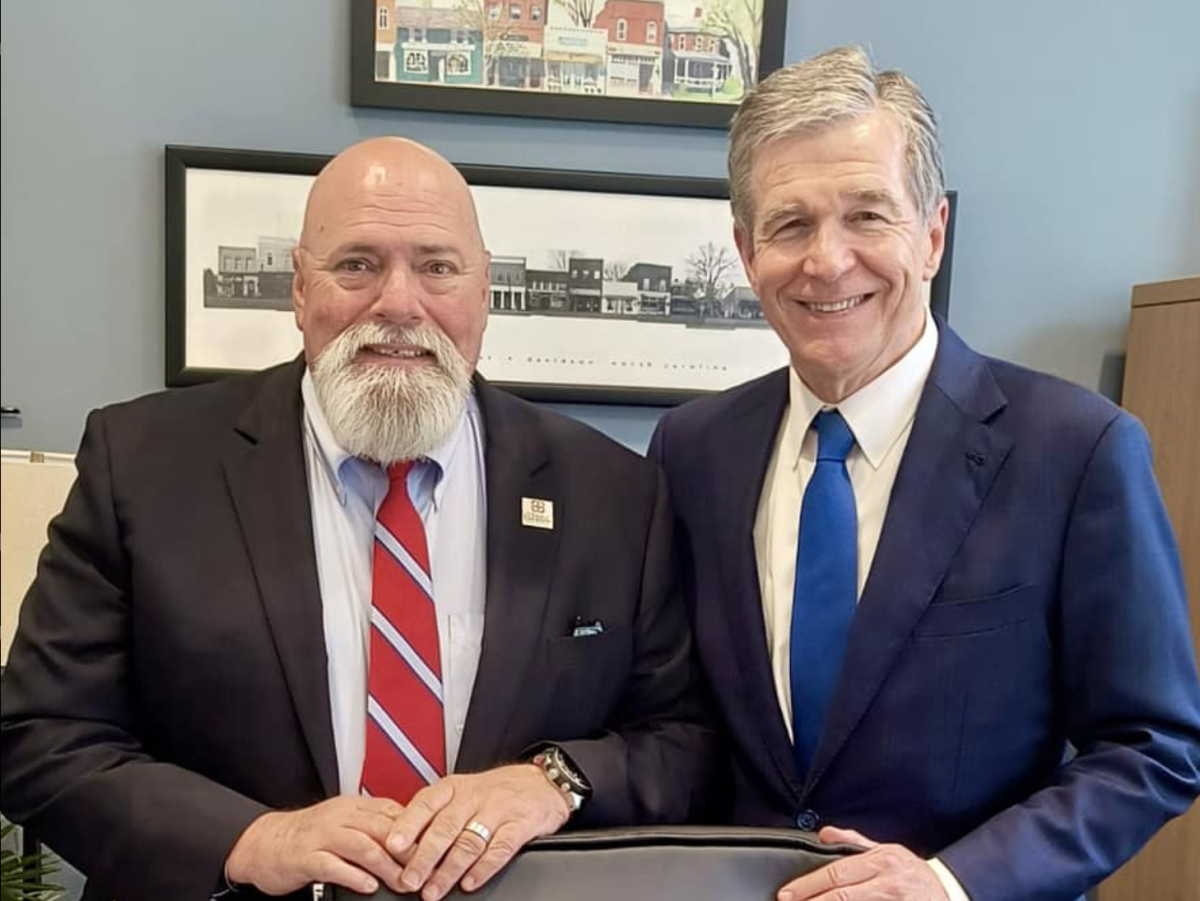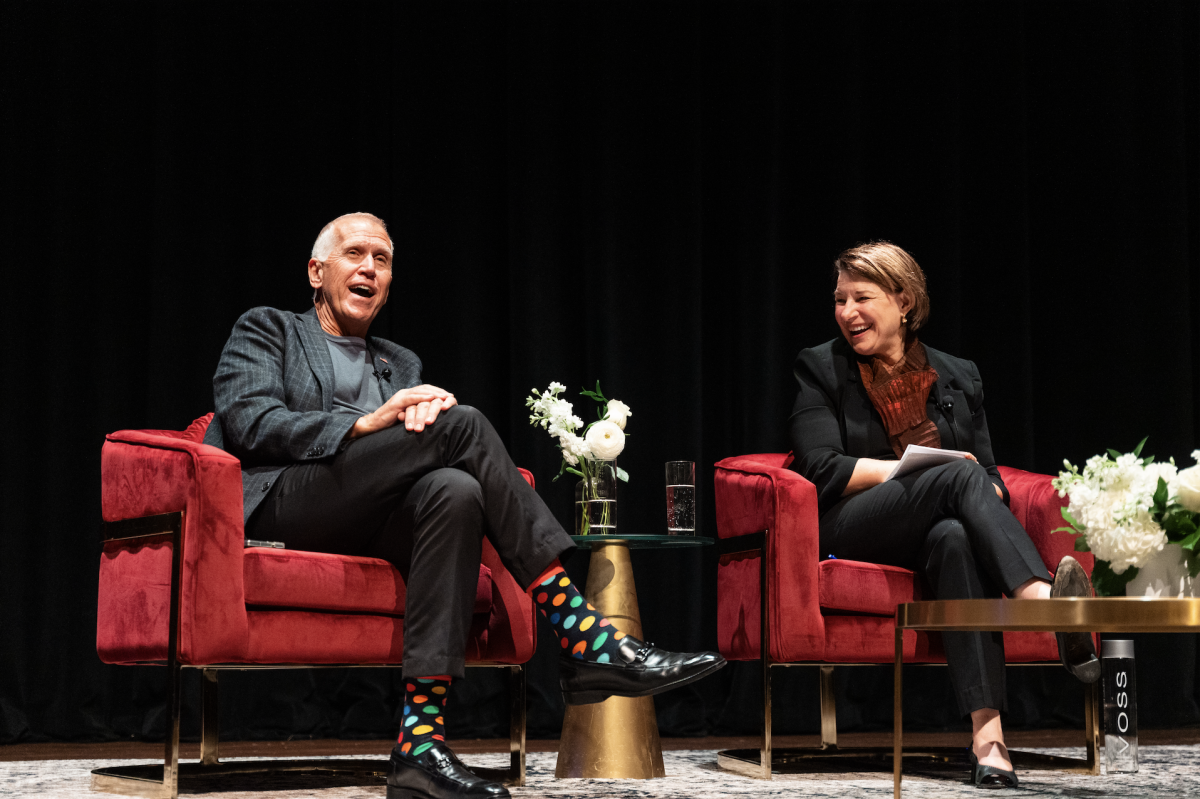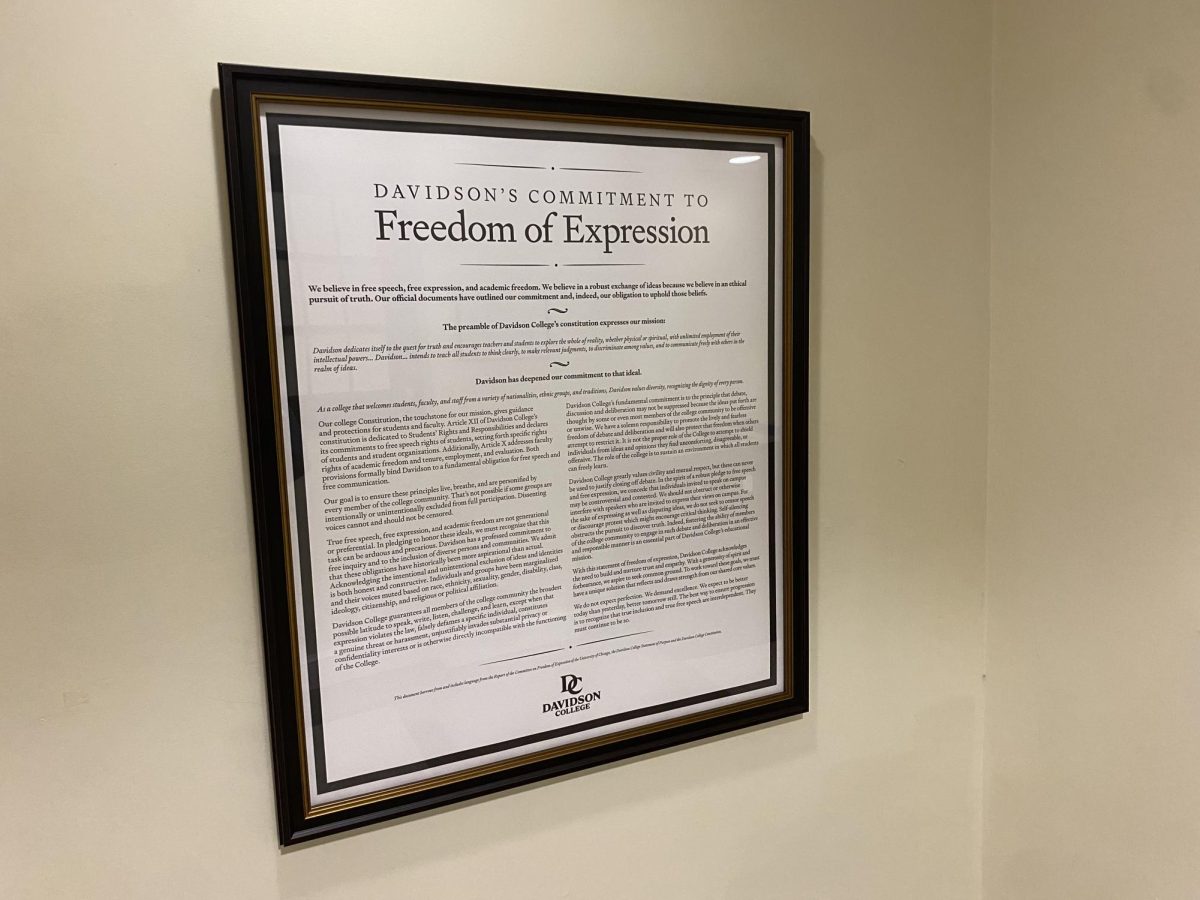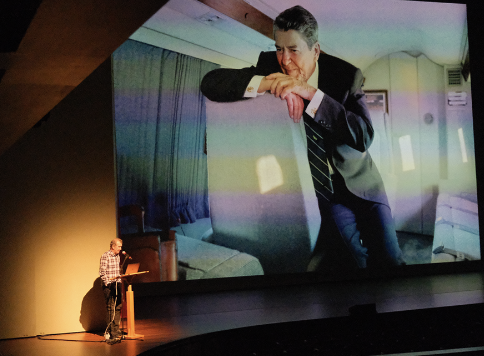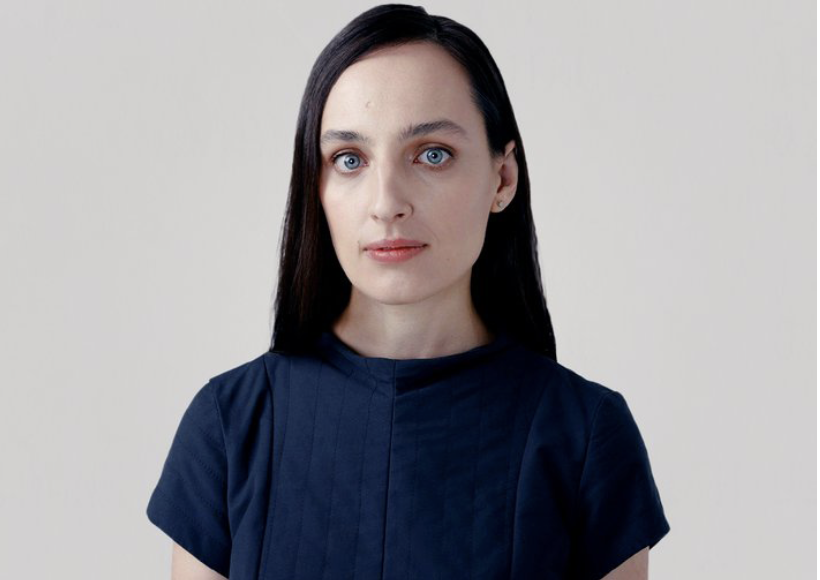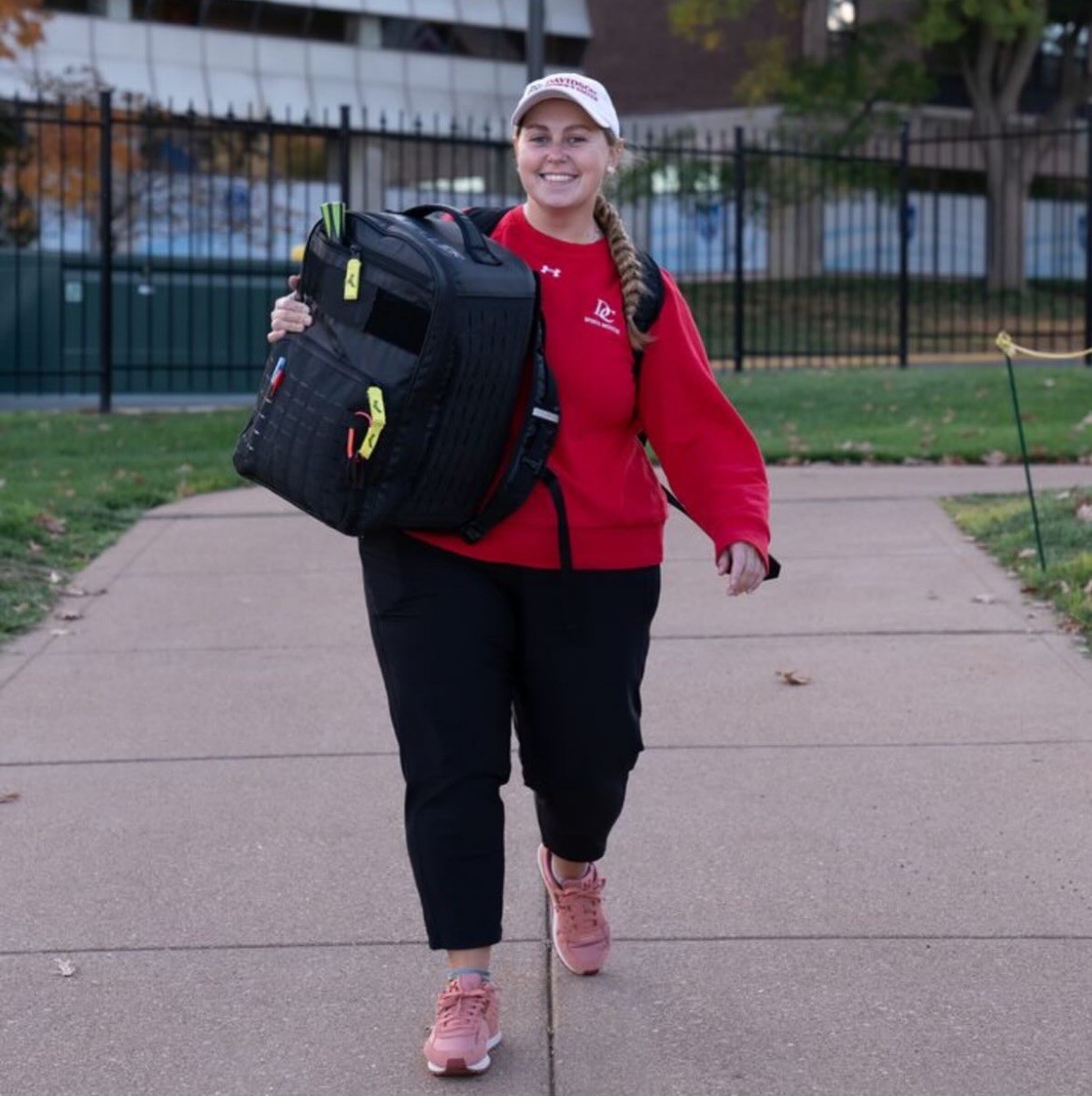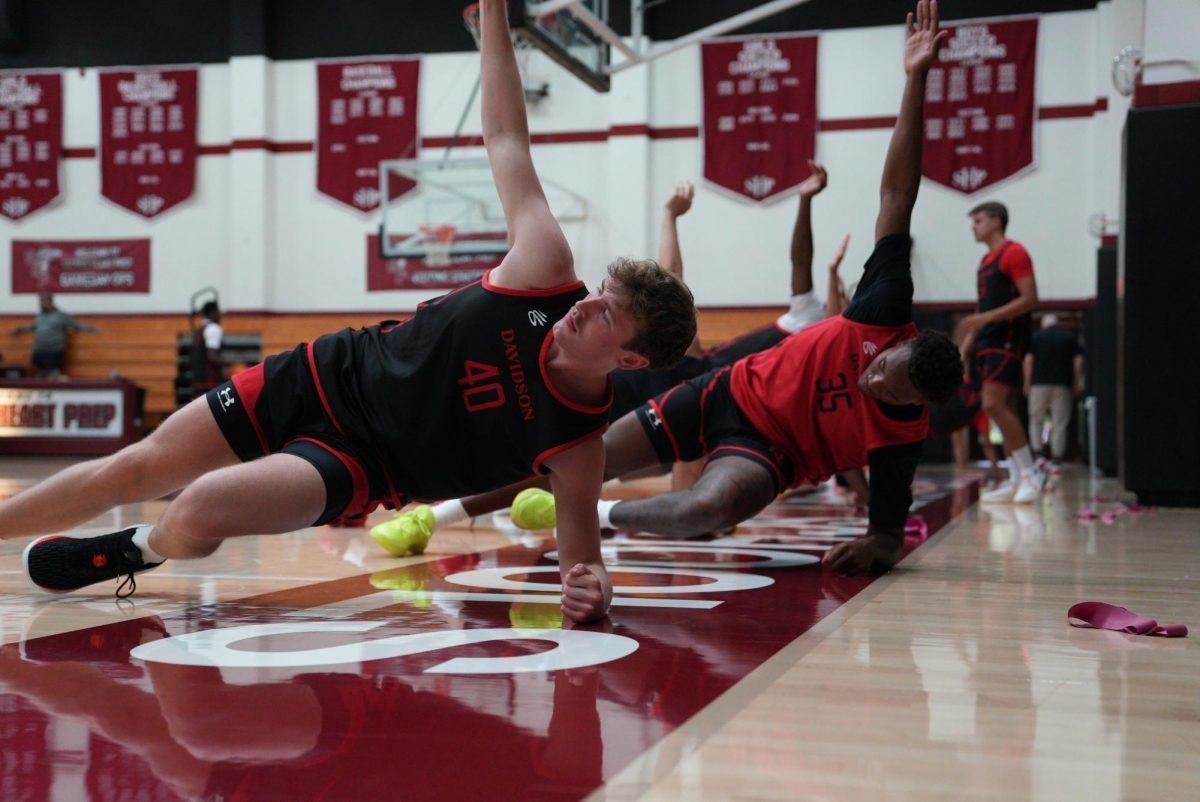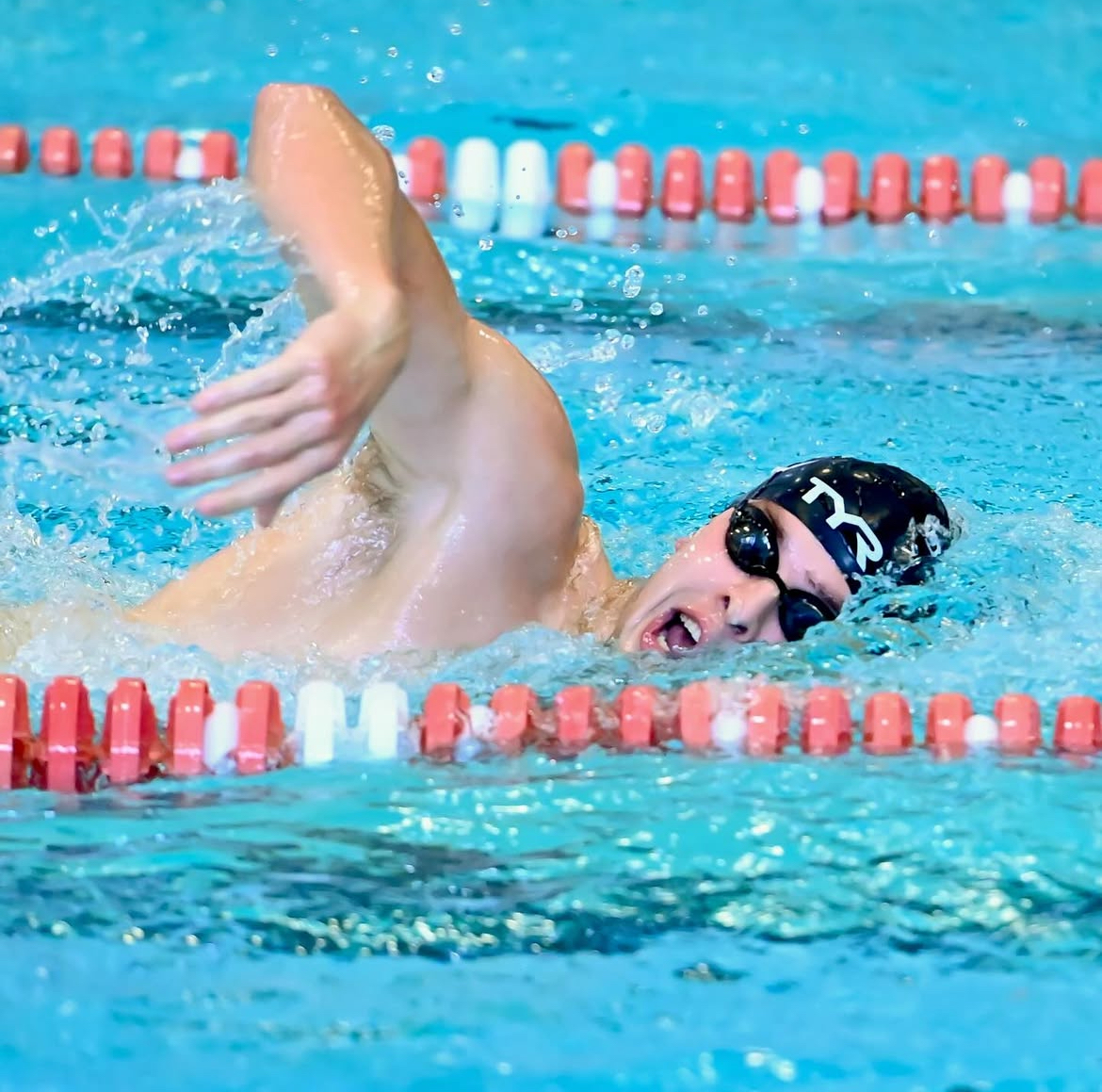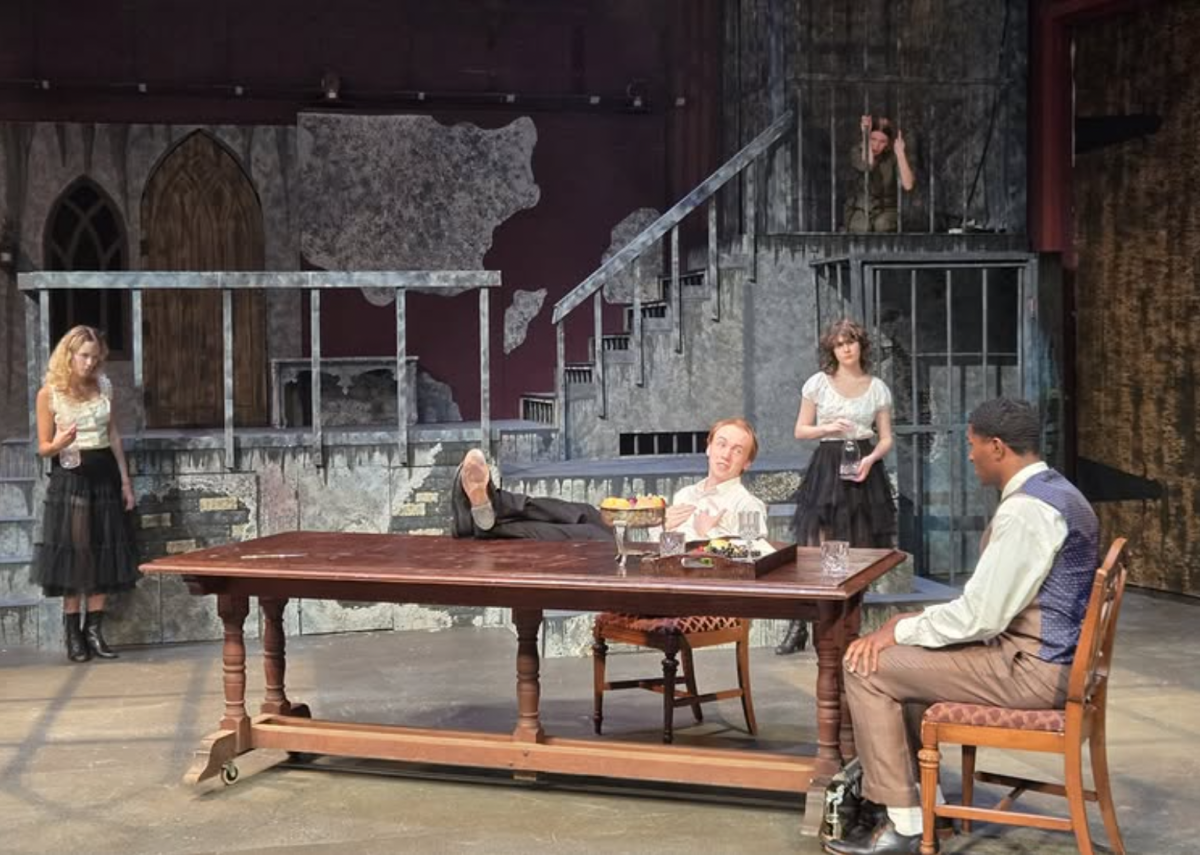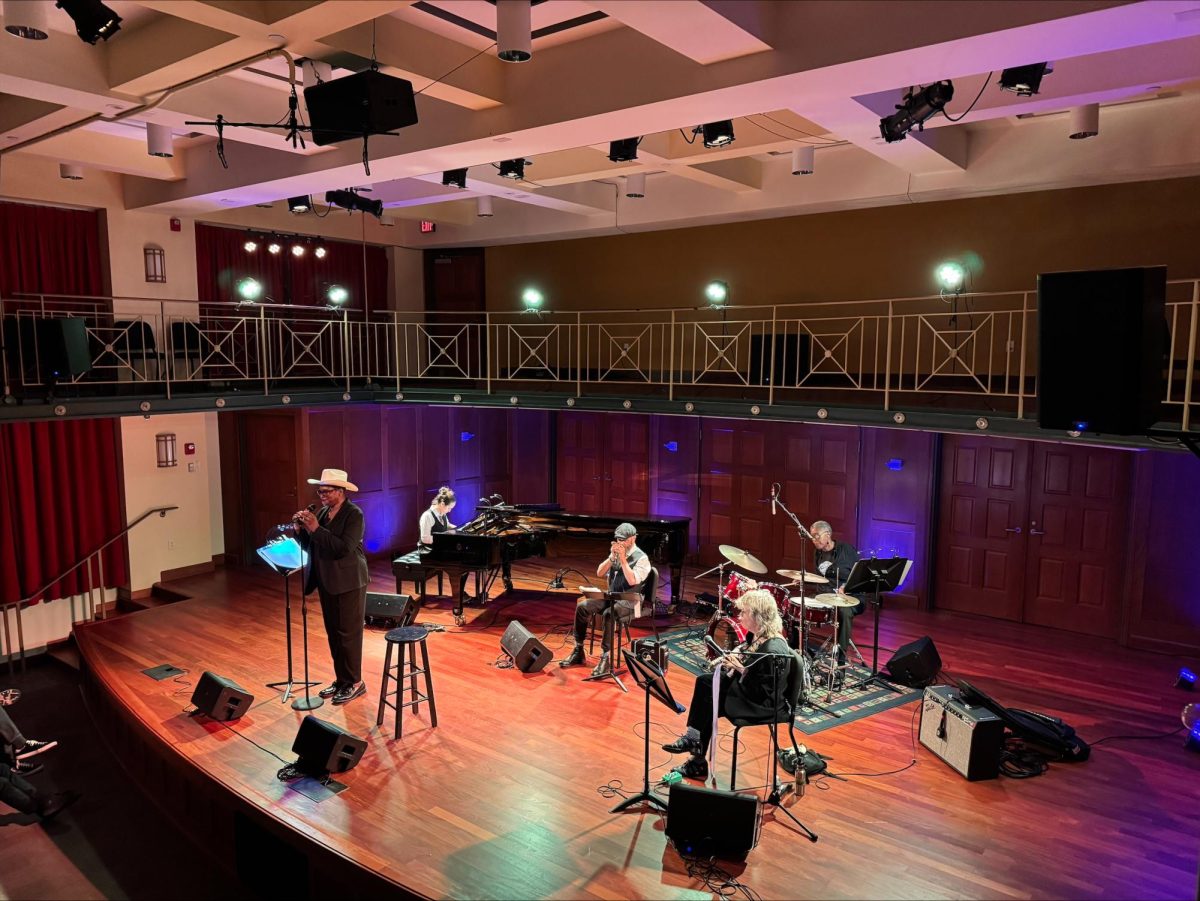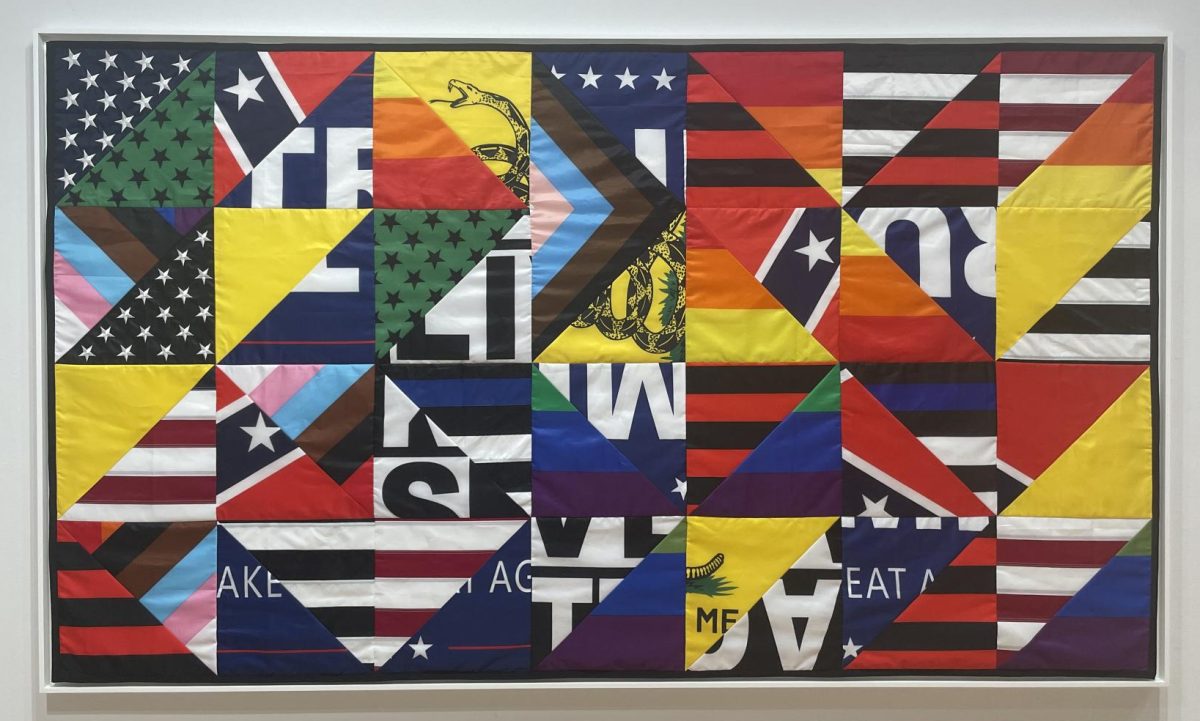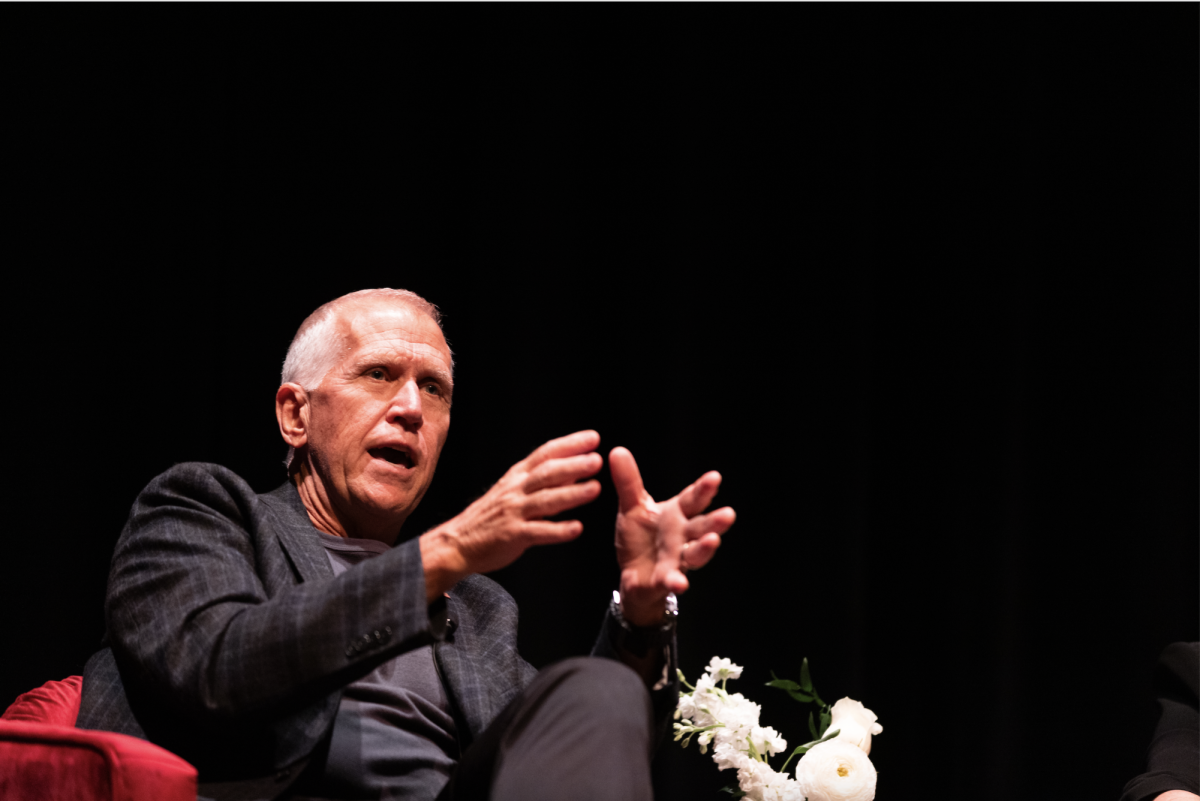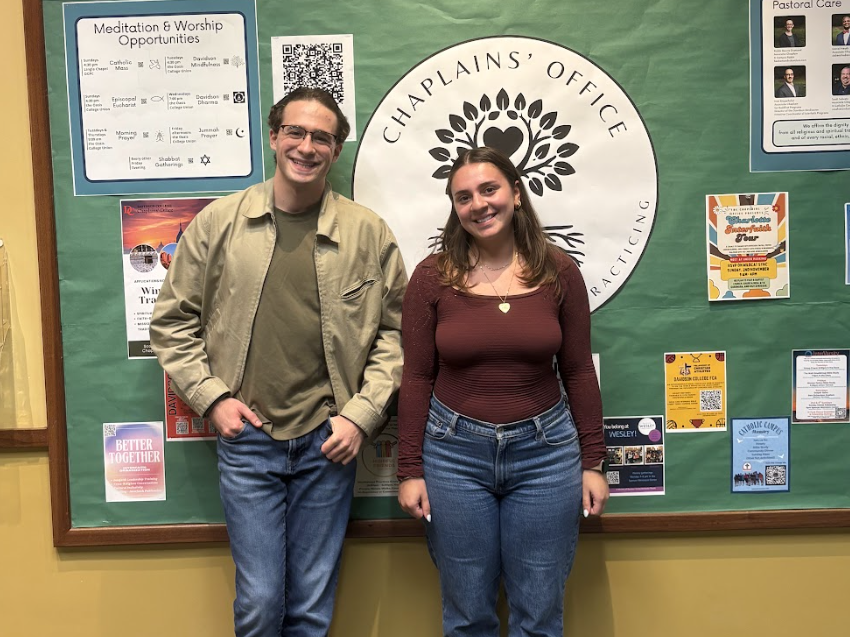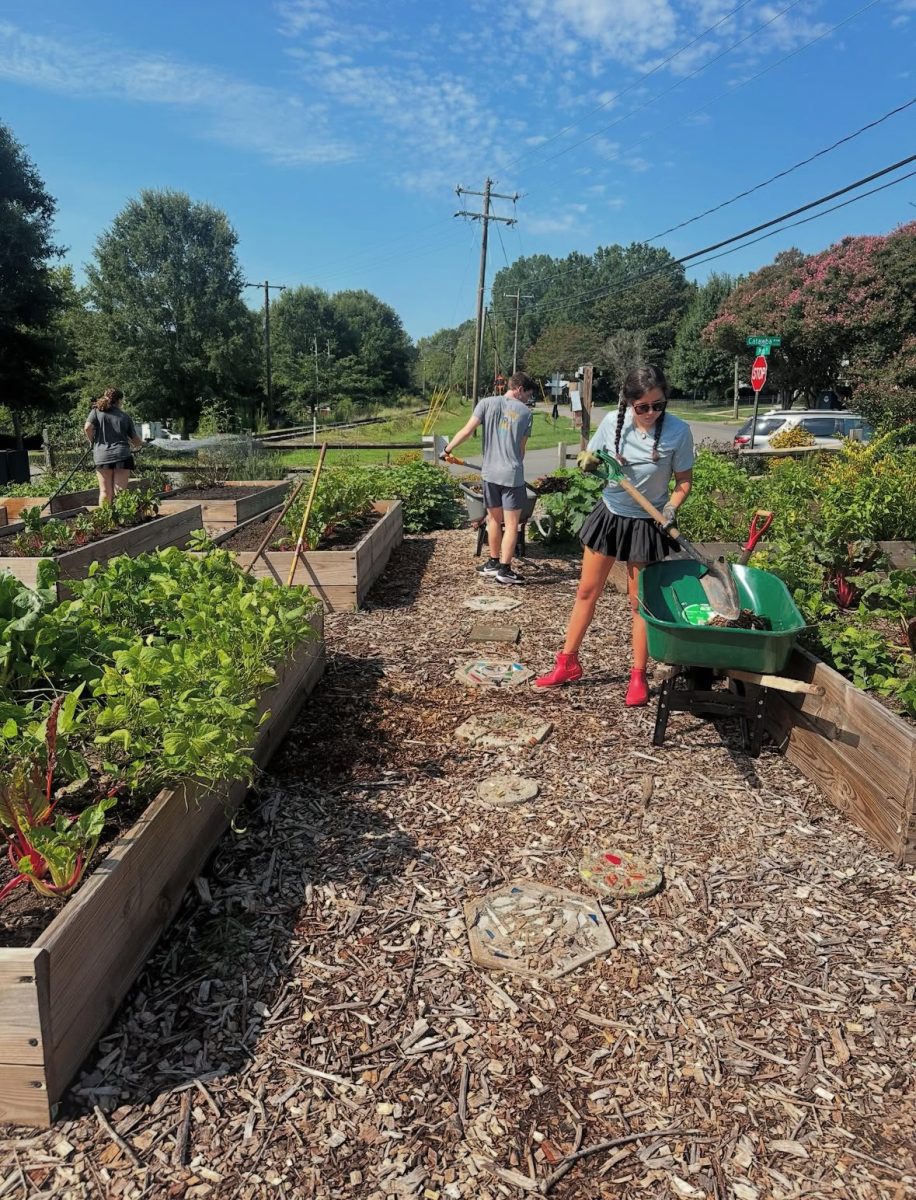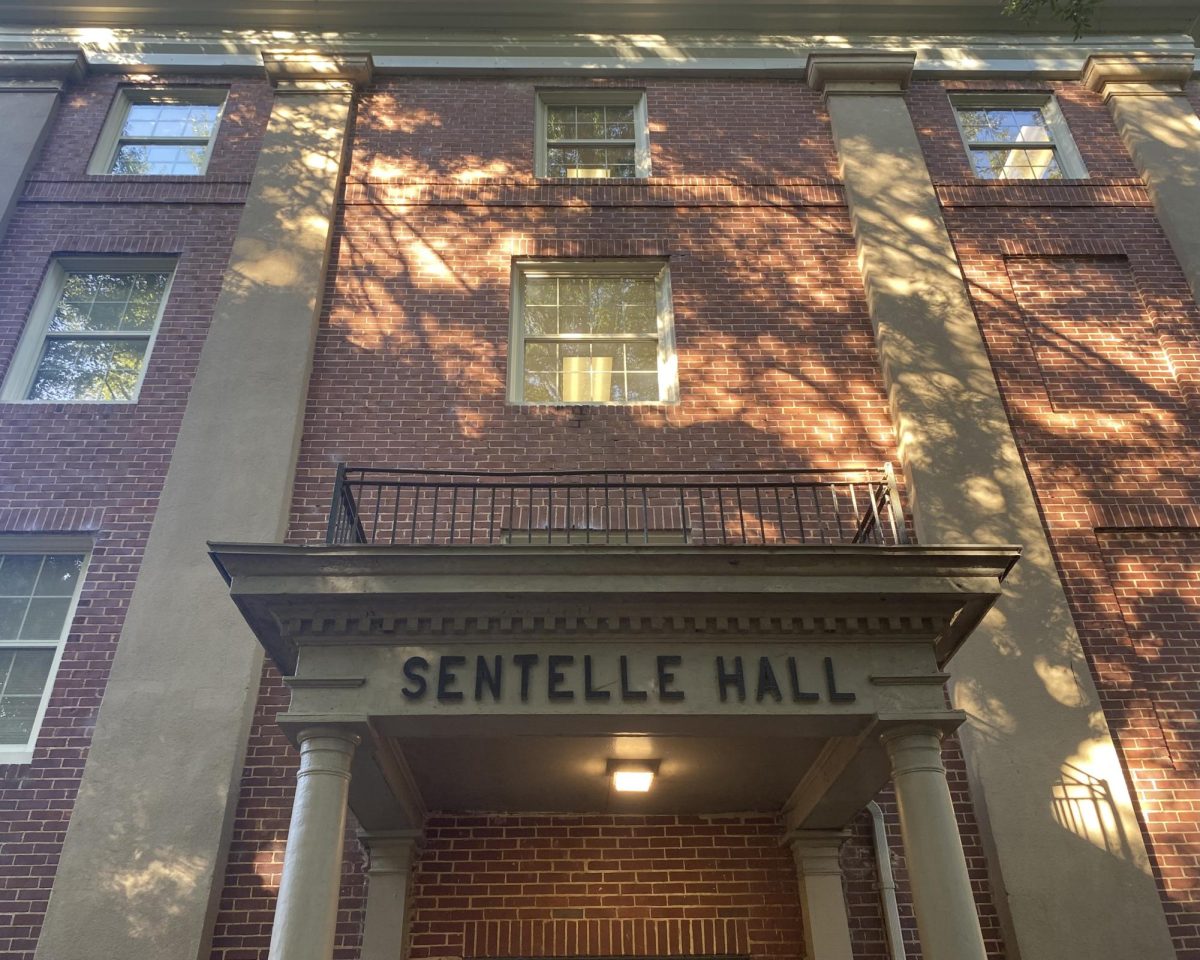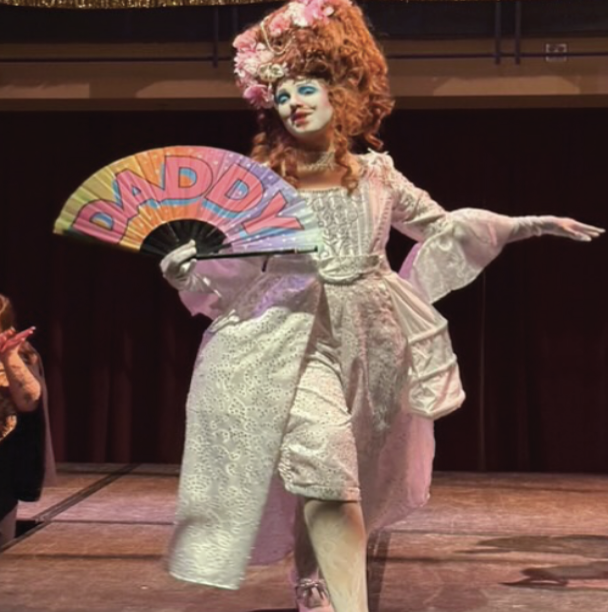On April 12, Davidson students were given an evening of extraordinary entertainment in the form of the annual Drag Show, put on by Queers & Allies (Q&A). Featuring nine professional drag queens and five student performances, the show got off to a raucous start with a beautiful performance of “Don’t Stop Believin’” by King Perka, whose dancing was charmingly erratic. Afterward, the audience was treated to an absolutely star-studded lineup of performers. The stunning athletic ability of the performers was on full display. Nothing matches the excitement of watching a relatively tall drag queen in a complicated outfit (that is undoubtedly difficult to move in) effortlessly jump into a split; the audience bore witness to this brilliant spectacle on numerous occasions.
The elaborate and colorful costumes—which are often handmade and designed by the performers themselves—are a staple of drag, and the night’s performers, both student and professional, did not disappoint in this respect. One professional performer, Tia Douglas, wore a spectacularly extravagant pirate costume, which served as a remarkable supplement to her performance of “Come Sail Away” by Styx. Vegas van Dank donned an intentionally terrifying costume and performed what seemed to be some kind of death metal song; needless to say, she made excellent use of her prop chainsaw. Liam Laughlin also astounded the audience with their costume when they removed half of their massive hairpiece to procure what looked like a Diet Mountain Dew, proceeding to chug a sizable portion of it during their rendition of “Champagne Supernova.”
Singer Chappell Roan was massively popular on Saturday night; indeed, one can reasonably assume that she would have been flattered and charmed by the student performer OSHA Violation, who captivated the audience with “HOT TO GO!” Other student performers included a group (made up of Daddy Jazzy, Rita Book and Aboobie Tits) who seemed to be mimicking the film series “Men in Black,” and halfway through their set piece, the third performer in their group leapt onto the stage in an alien costume. She moved in a way that was so remarkably unique that it caused this author to tap his roommate on the shoulder and say, “I’ve never seen somebody move like that before.” This was meant in a completely laudatory manner. Student performer Pussin’ Boots exuded a level of ease and swagger during their performance that was previously thought of as impossible for Davidson students. Finally, the last of the student performers—a trio consisting of Femme Brǔlée, Glazed and Confused and Cinna Moan—had choreography that was impressively nailed down and coordinated, which was almost as impressive as their elaborate face paint and costumes.
Indubitably, the most exciting aspect of drag for the audience (and one can only imagine how this feels for the performer) is witnessing the performer achieve a kind of transcendence: a transcendence of the self and a transcendence of oppressive societal norms. Drag is a type of performance that is completely singular, matched or paralleled by no other form of self-expression. On its face, the idea of simply watching someone lip sync is unexciting, but for the two hours in which they owned the 900 Room, the performers—student and professional alike—made it the most captivating thing in the world. It would be a reductive disservice to characterize drag as pure spectacle. It is a political act, a liberatory one and a performance of collective and personal joy. But still, what a spectacle it is.
For all the exuberance that the performers brought to Davidson College, the show ended on a touchingly poignant note. Lolita Chanel’s final piece incorporated the voice of their grandmother who, as they told the audience at the end of the performance, is still without political representation in our country, even after sixty-plus years of inhabiting it. Lolita and Oso Chanel both used some time at the end of the show to remind the audience of the political origins of drag, imploring students to vote and to stand up for their neighbors, to, in their words, create a country in which “one can be queer and safe.” OSHA Violation says that this political messaging is nothing new for drag: “it has always been a tool of political organization.”
Lucy Shuker ‘25, president of Q&A and key organizer of the event, described what her event meant for the organization and for the campus as a whole. “Now more than ever, it is important to have spaces like the drag show, because participating in drag and queer culture is inherently an active resistance in this political climate. And so I think the most important thing, rather than just the success of the event itself, is being able to show people that we can still hold these spaces in 2025 and that we will forever be able to hold these spaces, and just how important it is to gather as a community and build that community,” she stated.
This message of the event was both sobering and inspiring, primarily the latter, but also remarkably topical. Perhaps no art form has found itself victimized by the recent resurgence of anti-LGBTQIA+ moral panics than drag shows. Criticisms of drag are often made in bad faith, refusing to engage with it on its terms. Criticisms are made by people who are provoked much too easily by things that are outside of their immediate cultural lexicon. If any of these critics attended the show, they would have seen drag in all of its joyous and profound beauty. They would have seen a community that was brought together and enlivened by it, and most importantly, they would have seen some really cool splits.
Sören Potthoff ‘27 is an English major from Chapel Hill, NC and can be reached for comment at [email protected].

